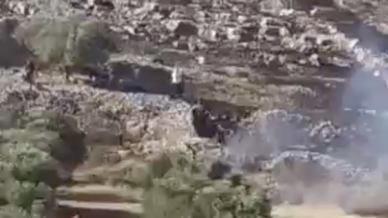A $13 Billion Dollar Aircraft Carrier Won’t Stop Organized Crime In Venezuela – Forbes

United States Military Escalation in the Caribbean: An Analysis of Implications for Sustainable Development Goals
A recent United States military deployment to the Caribbean, ostensibly to counter narcotics trafficking, raises significant concerns regarding its alignment with the principles of the Sustainable Development Goals (SDGs), particularly SDG 16 (Peace, Justice and Strong Institutions).
Military Deployment Versus SDG 16: Peace, Justice and Strong Institutions
Deployment Details and Escalation
The military buildup represents a significant escalation of force in the region, directly challenging the objectives of SDG 16 to promote peaceful and inclusive societies.
- The deployment includes the USS Gerald Ford aircraft carrier, additional warships, and attack planes.
- Approximately 10,000 U.S. military personnel have been positioned in the region since late August.
- Ten F-35 fighter jets were dispatched to Puerto Rico.
- This action has been characterized by the Centre for Strategic and International Studies as “one step closer to war,” undermining regional stability.
Justification and Impact on Justice
The stated rationale for the deployment is to counter alleged drug operations involving the Venezuelan government and the criminal group Tren de Aragua. However, this military approach has resulted in violence and bypasses established justice mechanisms, conflicting with SDG 16’s targets on reducing violence and ensuring the rule of law.
- The administration’s claims of cooperation between the Venezuelan government and Tren de Aragua are contested by a leaked intelligence memo.
- Ten U.S. strikes on supposed drug boats have resulted in 43 deaths, with little evidence confirming the vessels were involved in narcotics trafficking.
- This loss of life is a direct contradiction to SDG 16’s aim to significantly reduce all forms of violence and related death rates everywhere.
Misallocation of Resources and Ineffective Strategy
Operational Inefficiency
The strategic choice of an aircraft carrier for anti-narcotics operations is operationally inefficient and represents a significant financial investment that could otherwise be directed toward sustainable development initiatives.
- The USS Gerald Ford, costing $13 billion, is the most expensive warship ever built. The total program cost is estimated at $120 billion.
- Aircraft carriers and their high-speed fighter jets are not designed for the slow, persistent surveillance required for effective drug interdiction.
- The warship is vulnerable to low-tech threats and cyber-attacks, making it a high-cost, high-risk asset for this type of mission.
Financial Disparity and Impact on Development Goals
The immense expenditure on military hardware starkly contrasts with declining investment in regional development, undermining progress on SDGs 1, 3, 4, 8, and 10.
- The U.S. provided approximately $2.8 billion in development aid for the entire Latin American region in 2022, an amount now facing cuts.
- The cost of the aircraft carrier program is over 40 times the total annual development aid for the region, highlighting a prioritization of military solutions over sustainable development.
Socio-Economic Drivers of Insecurity and the Role of the SDGs
Understanding Regional Criminal Dynamics
The focus on Tren de Aragua as a primary drug cartel is questionable. The group’s activities are more closely linked to socio-economic desperation, a root cause that military force cannot address but which is central to several SDGs.
- Tren de Aragua’s primary criminal enterprises are human trafficking and the exploitation of vulnerable Venezuelan migrants.
- Venezuela is not a major player in the regional drug trade; only 8% of cocaine trafficked to the U.S. passes through the country.
- The group’s power is reportedly waning due to law enforcement actions in Venezuela and Colombia, as well as internal fragmentation.
Addressing Root Causes Through the 2030 Agenda
A sustainable approach to regional security requires addressing the underlying conditions that allow criminal groups to thrive, which aligns with a development-focused strategy as outlined by the United Nations.
- SDG 1 (No Poverty) & SDG 8 (Decent Work and Economic Growth): The United Nations Development Programme identifies that human insecurity and lack of economic opportunity in Venezuela create a fertile ground for criminal exploitation.
- SDG 10 (Reduced Inequalities): The vulnerability of migrants, which Tren de Aragua exploits, is a direct consequence of inequality and lack of access to basic services.
- SDG 3 (Good Health and Well-being) & SDG 4 (Quality Education): Long-term investment in healthcare and education is crucial for building resilient communities that are less susceptible to recruitment by criminal organizations.
A Sustainable Path Forward: Prioritizing Development and Justice
Strengthening Institutions in Line with SDG 16
An effective, non-violent strategy would focus on strengthening the rule of law and justice systems to dismantle criminal networks.
- Prioritize the prosecution of the financial, logistical, and political networks that support organized crime.
- Target money launderers and corrupt officials to weaken criminal groups from within, reinforcing strong and accountable institutions.
Reallocating Resources to Achieve the SDGs
Shifting financial priorities from military spending to development aid would more effectively address the root causes of instability and crime in the region.
- Increase and strategically invest development aid in programs that create jobs, improve healthcare, and expand educational access.
- This approach directly addresses the drivers of human insecurity and aligns with a comprehensive strategy for achieving the Sustainable Development Goals, fostering long-term peace and stability.
Analysis of Sustainable Development Goals in the Article
1. Which SDGs are addressed or connected to the issues highlighted in the article?
- SDG 16: Peace, Justice and Strong Institutions: This is the most prominent SDG in the article. The text revolves around international conflict, military deployment, violence (killings from strikes), organized crime (Tren de Aragua), drug trafficking, and human trafficking. It also discusses alternative solutions related to justice, such as prosecuting criminals and their patrons, which directly relates to building strong institutions and promoting the rule of law.
- SDG 8: Decent Work and Economic Growth: The article’s focus on human trafficking and the exploitation of vulnerable migrants connects directly to this goal, specifically its target on ending modern slavery and forced labor.
- SDG 17: Partnerships for the Goals: The article mentions international development aid provided by the US to the region and the fact that this aid is being cut. This relates to the financial commitments and partnerships needed to achieve sustainable development.
- SDG 1: No Poverty, SDG 3: Good Health and Well-being, and SDG 4: Quality Education: These goals are indirectly addressed when the article cites a United Nations Development Program Report. The report suggests tackling the root causes of crime by “investing in long-term development in healthcare, education and job creation to provide economic opportunities,” which are central to these SDGs.
2. What specific targets under those SDGs can be identified based on the article’s content?
-
SDG 16: Peace, Justice and Strong Institutions
- Target 16.1: Significantly reduce all forms of violence and related death rates everywhere. The article mentions that the US has “carried out ten strikes of supposed drug boats in the Caribbean, killing 43 people.” Furthermore, the deployment of an aircraft carrier is described as “one step closer to war,” highlighting the risk of escalating violence and conflict.
- Target 16.4: By 2030, significantly reduce illicit financial and arms flows, strengthen the recovery and return of stolen assets and combat all forms of organized crime. The entire article focuses on combating organized crime, specifically the group Tren de Aragua and drug cartels. It discusses their activities, such as drug trafficking and human trafficking. The article also suggests prosecuting “financiers, money launderers and those involved in logistical operations” as a more effective strategy, which directly aligns with this target.
- Target 16.a: Strengthen relevant national institutions… to prevent violence and combat terrorism and crime. The article critiques the purely military approach to combating crime and instead points to alternative strategies like strengthening the justice system (“put more effort into prosecuting the businesses sponsoring criminal groups”) and investing in development to address the root causes of crime, which implies building institutional capacity for crime prevention.
-
SDG 8: Decent Work and Economic Growth
- Target 8.7: Take immediate and effective measures to eradicate forced labour, end modern slavery and human trafficking and secure the prohibition and elimination of the worst forms of child labour. The article explicitly states that the criminal group Tren de Aragua “has mostly focused on human trafficking and the exploitation of Venezuela migrants,” directly linking the issue to this target.
-
SDG 17: Partnerships for the Goals
- Target 17.2: Developed countries to implement fully their official development assistance commitments. The article notes that “In 2022 the US provided about $2.8 billion in development aid for the entire region, but this aid is now being cut.” This directly addresses the topic of official development assistance from a developed country.
3. Are there any indicators mentioned or implied in the article that can be used to measure progress towards the identified targets?
-
For Target 16.1 (Reduce violence and death rates):
- Number of conflict-related deaths: The article provides a specific figure: “killing 43 people” in ten strikes. This serves as a direct indicator of deaths resulting from military/security operations.
-
For Target 16.4 (Combat organized crime):
- Scale of organized crime groups: The article estimates the size of Tren de Aragua at “about 5,000 members,” which can be used as an indicator of the group’s strength.
- Volume of illicit trafficking: The article mentions that “only 8% of cocaine trafficked to the US passes through Venezuela,” providing a quantitative measure of a specific illicit flow.
- Law enforcement actions: The “arrest of several of Tren de Aragua’s high-ranking leaders” and the death of another leader during a police raid are mentioned as indicators of progress in disrupting the organization’s operations.
-
For Target 17.2 (Official development assistance):
- Volume of development aid: The article specifies the amount of aid provided by the US in 2022 as “$2.8 billion.” It also notes that this aid is “being cut,” indicating a negative trend for this indicator.
-
General Indicators for Peace and Security vs. Military Spending (SDG 16):
- Military expenditure and deployment: The article provides several figures that can serve as indicators of military resource allocation: the deployment of “10,000 US military troops,” the cost of one aircraft carrier (“$13 billion”), and the total cost of the carrier program (“upwards of $120 billion”). These figures can be contrasted with development spending to measure national priorities.
4. SDGs, Targets, and Indicators Table
| SDGs | Targets | Indicators |
|---|---|---|
| SDG 16: Peace, Justice and Strong Institutions | 16.1: Significantly reduce all forms of violence and related death rates everywhere. |
|
| SDG 16: Peace, Justice and Strong Institutions | 16.4: Significantly reduce illicit financial and arms flows… and combat all forms of organized crime. |
|
| SDG 16: Peace, Justice and Strong Institutions | 16.a: Strengthen relevant national institutions… to prevent violence and combat terrorism and crime. |
|
| SDG 8: Decent Work and Economic Growth | 8.7: Take immediate and effective measures to eradicate forced labour, end modern slavery and human trafficking. |
|
| SDG 17: Partnerships for the Goals | 17.2: Developed countries to implement fully their official development assistance commitments. |
|
Source: forbes.com
What is Your Reaction?
 Like
0
Like
0
 Dislike
0
Dislike
0
 Love
0
Love
0
 Funny
0
Funny
0
 Angry
0
Angry
0
 Sad
0
Sad
0
 Wow
0
Wow
0


















































.jpg.webp?itok=0ZsAnae9#)



/environment-climate-change-and-health-(ech)/water-sanitation-hygiene-and-health-(wsh)/landfill-tuvalu-36092.tmb-1200v.jpg?sfvrsn=5c21fe40_1#)




















